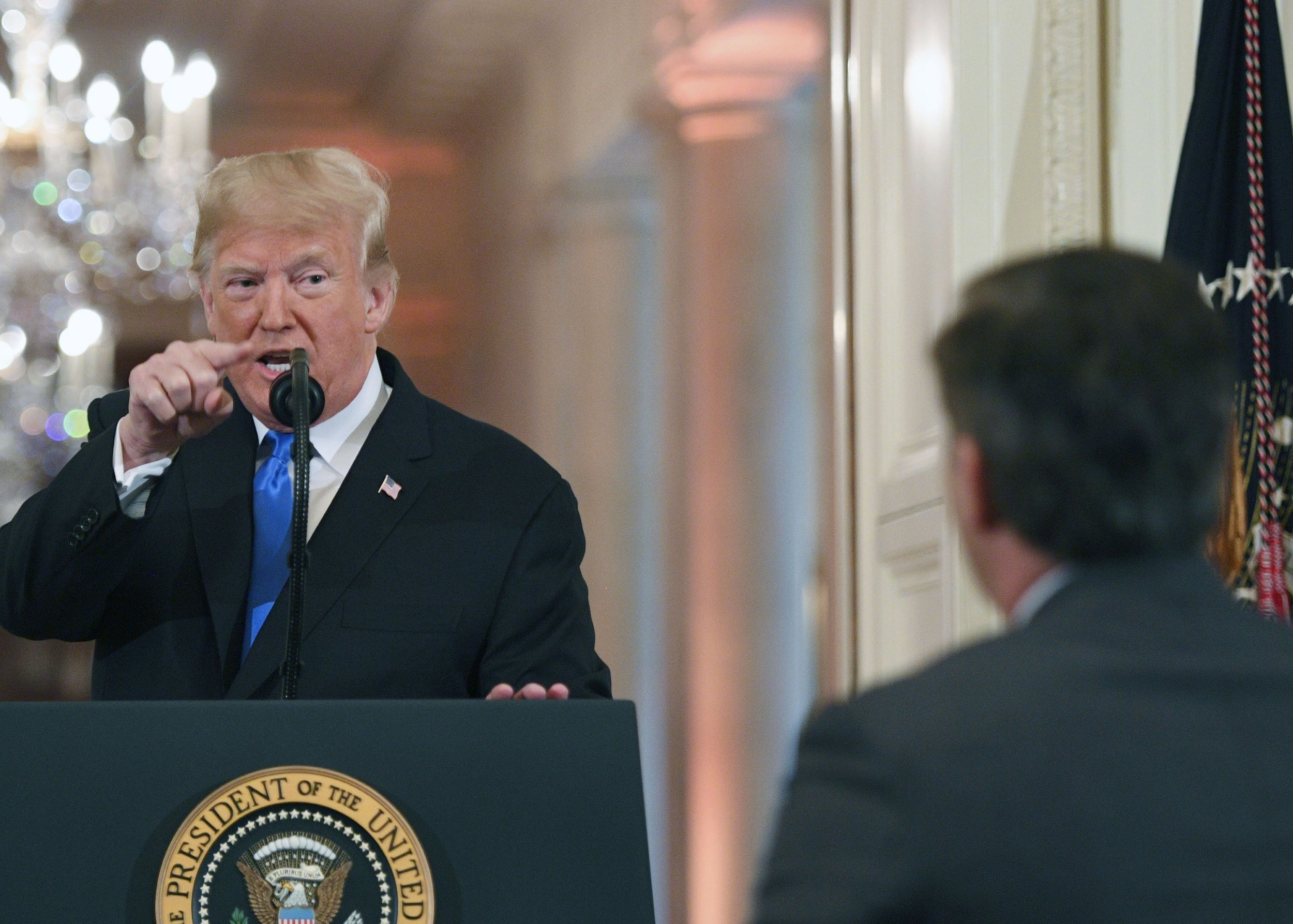Trump’s attack on CNN’s Jim Acosta puts journalists everywhere at greater risk
Analysis: At the most fundamental level, the president appears not to accept that the role of the media is to hold politicians to account, says Will Gore


In an interview at the beginning of this week President Trump was asked whether he would have done things differently during his first two years in office, if he could have his time over again.
“I would say tone,” he replied. “I would like to have a much softer tone.”
Two days later, with the results of the midterm elections proving that the US is as divided now as it was when Trump came to office, the president seemed to prove that any ambition to soften his tone had lasted about as long as Jeff Sessions’ hopes of staying in his job.
In a combustible press conference, the president was challenged by CNN’s Jim Acosta about his use of the word “invasion” to describe the migrant caravan making its way towards America’s southern border; the reporter asked the president whether his description “demonised immigrants”.
Trump responded by suggesting that if Acosta did his job better, CNN would have higher ratings, before announcing: “OK, that’s enough.” A White House aide then sought to remove the microphone from Acosta’s hands.
In the aftermath, Acosta found himself accused of “placing his hands” on the female aide and was stripped of his press pass.
Supporters and opponents of the president have spent the subsequent hours debating whether or not Acosta manhandled the aide – for what it’s worth, I don’t think the evidence bears out that contention; he seemed not even to have noticed her until she tried to pull the microphone away. To that end, the White House’s claim appears to be ill-founded.
But in any event, the precise question of whether Jim Acosta’s hand touched the aide’s arm is – despite its consequences – a bit of a sideshow. What his exchange with the president and its aftermath proved is simply that Trump’s relationship with the media is not going to improve.
At the most fundamental level, the president appears not to accept the notion that the role of journalists is to hold politicians to account. In his distaste for scrutiny and in his portrayal of the media as his enemies – and, by extension, enemies of the people – he has shown the instincts of an authoritarian.
Indeed, it is even possible that his clashes with the media will become more intense after the midterms, given that the elections’ outcome may force Republicans and Democrats to find ways to work together (if they are to avoid legislative gridlock). In this scenario, the president’s need for a public foe will be fulfilled only by a “hostile” media.
There will be many who look at Trump’s antipathy towards press freedom with horror, and who wonder what the long-term impact will be on America’s social fabric, even its democracy. Yet it is important to consider too the effect his approach has on journalism elsewhere.
After all, freedom of speech in the US is subject to greater protections than it is in most other nations around the world. The president cannot stop people writing about him, let alone close media businesses, jail journalists, or make them “disappear”. What he can do though is embolden regimes which have murkier track records and who will use Trump’s example as an excuse for their own crackdown on “fake news” or journalistic “enemies of the people”.
In its statement suspending Jim Acosta’s press pass, the White House insisted that “President Trump believes in a free press”. Yet his actions belie that statement; they also endanger journalists the world over.
Join our commenting forum
Join thought-provoking conversations, follow other Independent readers and see their replies
Comments